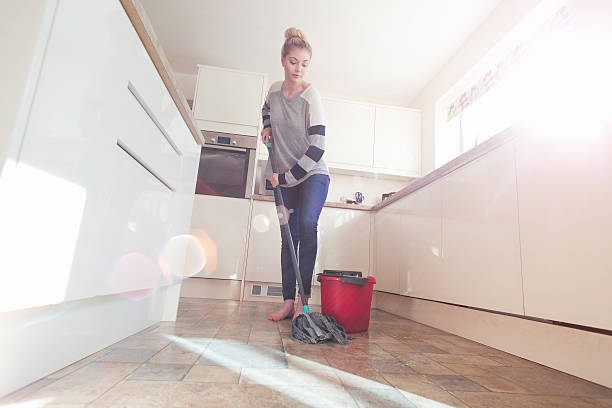Lots of useful tips for choosing the types of wooden floor for the new wooden floor. Wooden floors look natural, aesthetic, and inviting. In addition to real parquet, there are cheaper alternatives such as cork with a wood look or laminate.
A wooden floor is an enrichment for every living environment. The natural material exudes elegance and has a positive influence on the atmosphere. Real parquet is probably the most beautiful and long-lasting variant. Due to the sometimes high costs, this solution is not feasible for every household. In this guide, we address the advantages of parquet flooring and the alternatives that the market presents.
Parquet – the aesthetic classic

Parquet is a high-quality wooden floor that looks particularly elegant and has a multitude of advantages. Manufacturers are generally only allowed to designate floor coverings as parquet if the wear layer is at least 2.5 millimeters thick, as specified in the DIN EN 13489 standard. As with any other product, a few factors must be considered when purchasing in order to benefit from maximum quality. For example, the service class, type of construction, degree of hardness of the wood, and the surface finish are decisive.
You can bring more comfort into your home with oiled parquet, for example. Thanks to oil, the surface has a pleasant feel and the walking feeling is even warmer. If you prefer a particularly easy-care surface instead, painted models are ideal. Limed and brushed parquet are recommended for the country house furnishing style that is currently in demand. There are also differences in formats and laying techniques. Solid floorboards usually make rooms look bigger. Instead, the herringbone pattern guarantees individuality.
Advantages of parquet
The advantages of parquet flooring at a glance:
- durable
- easy-care
- durable
- natural charm
- Click systems without adhesive substances are suitable for healthy and ecological living
- damaged surfaces can be repaired by grinding
- visually attractive
In addition to the advantages, parquet has two disadvantages: Despite the robust surfaces, the maintenance effort is sometimes high. Many coverings have to be sanded down and resealed regularly. This costs additional money and a lot of time. However, many decide against real parquet because of the costs. With alternatives such as laminate, cork, or linoleum, you can cheaply imitate real wooden floors. We’ll tell you what to look out for. Please also note tips for cleaning laminate and parquet.
Linoleum – The new star of sustainability
For a long time, linoleum had almost completely disappeared from the market, but today it is convincing as an innovative floor covering. Bio-responsible variants are made from a mixture of wood flour, pigments, linseed oil, limestone, and natural resin and are compostable. If you value environmental sustainability, linoleum is an excellent choice. The floor is robust, suitable for underfloor heating, hygienic, antistatic, and antibacterial. Cleaning is easy.
In order to achieve the desired wood look, we recommend generous linoleum floorboards or tiles. Leading manufacturers sell the most attractive products with a wood-like look. Caution is advised with alleged linoleum floors with a deceptively real wood design. Knots, veining, and other distinctive elements can currently only be achieved with plastic blends, with the result that the majority of these offerings are vinyl or PVC. Both are less ecological compared to real linoleum. But both can be laid well and easily. Also, read tips for laying vinyl floors.

Inexpensive alternatives to real wood
Laminate is cheaper than parquet and requires less care. Brand manufacturers have been working on optimizing the surfaces for years. The result is sophisticated imitations that make it impossible for laypeople to recognize the imitations as such. The quality and abrasion resistance of the decorative or top layer is essential in order to obtain durable and permanently intact floors. Also, note how you can remove grease stains on wood.
A small sensation among the parquet alternatives is cork. Some manufacturers have specialized in creating cork floors with a wood look and have perfected the manufacturing process. You achieve amazingly real-looking floors. Digital printing processes allow lightfast and extraordinary imitations of numerous types of wood. Surface seals make the cork surfaces extremely impact-resistant, abrasion- and scratch-resistant and improve UV stability. Looks from oak to alder to stone pine, ash and birch are conceivable. Floors with a structured surface look particularly attractive. Individual variants with tasteful signs of use and artwork designs round off the range.




